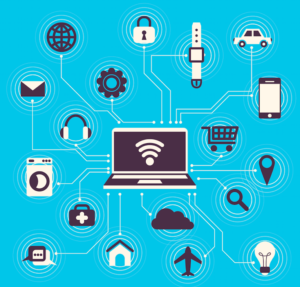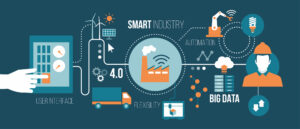 Today, we hear about several new technologies and their impact on our personal lives and businesses. Internet of Things, Artificial Intelligence, Machine Learning, etc. have become ‘talk-of-the-town’ and are spoken of by laymen, business leaders, and governments equally highly. We, Yantra, are a tech-driven company and, thus, plan to throw some light on some of the next-gen technologies in the form of a series of focused blogs. We hope you all find it valuable.
Today, we hear about several new technologies and their impact on our personal lives and businesses. Internet of Things, Artificial Intelligence, Machine Learning, etc. have become ‘talk-of-the-town’ and are spoken of by laymen, business leaders, and governments equally highly. We, Yantra, are a tech-driven company and, thus, plan to throw some light on some of the next-gen technologies in the form of a series of focused blogs. We hope you all find it valuable.
The following piece aims to introduce the Internet of Things and get a glimpse into how it may affect people and businesses. Read on!
IoT: Connecting Anything and Everything
Quite simply, IoT is about connecting anything and everything via the internet, thus creating a network of physical objects that interact with each other. It is about making physical objects ‘smart’ by enabling them to share (send/receive) information on their own.
Smart appliances like a smart refrigerator that can order milk on sensing low levels or a smart speaker that ‘talks’ to you and books a movie ticket for you are examples of IoT devices that we all may use going forward. On the other hand, even today, industries are using sensors that collect data on the shop-floor or from equipment; data like temperature, humidity, pressure, etc. are stored and analyzed to enable faster and accurate decision-making.
Why do we need IoT?
Businesses are continually trying to make processes  efficient, reduce costs, and increase output. IoT empowers them in this struggle via the collection and analysis of insightful data. Sensors applied on machines and equipment enable manufacturers and service providers to track production and monitor asset health remotely. Immediate action can be taken based on the data received. The timely and accurate response to events can lead to cost- and time optimization.
efficient, reduce costs, and increase output. IoT empowers them in this struggle via the collection and analysis of insightful data. Sensors applied on machines and equipment enable manufacturers and service providers to track production and monitor asset health remotely. Immediate action can be taken based on the data received. The timely and accurate response to events can lead to cost- and time optimization.
Consumers, too, are realizing the benefits of IoT by the day. Smartwatches collect data that can help improve our exercise routine. Smart monitoring and control of household appliances can help us save energy and extend the product lifecycle.
How does IoT work?
IoT is composed of interdependent elements like sensors that acquire data, internet for data transfer, cloud storage, and analytics capabilities to derive insights. Sensors range in complexity; they can be smartwatches that detect the number of steps we walk, sensors that monitor the temperature in buildings and utility equipment, or autonomous guided vehicles that move goods around a shop-floor (check out Yantra’s range of AGVs here).
Once data is collected by sensors, it is pushed to a central repository or cloud storage to be stored, processed, and analyzed. Today, leading cloud platforms boast of high computing power used to run analytics on the data. This leads to uncovering valuable insights that help businesses take immediate, data-driven, and accurate decisions to improve process efficiency.
The future of IoT
As of 2020, there are over 50 billion IoT devices operational across the globe. They are expected to generate approximately 4.4 zettabytes of data in a single year (A zettabyte is a trillion gigabytes). To put that into perspective, IoT devices in 2013 generated a mere 100 billion Gb of data!
Economically, too, IoT is going to be a boom. By 2025, the value of the global IoT market is expected to be over $10 trillion.
The adoption of IoT has dramatically increased in the last few years, especially in manufacturing. But other industries like healthcare, aerospace, oil & mining are fast becoming significant areas of adoption as well. However, for IoT to realize its true potential, more widespread and global adoption is required. It must become feasible enough for companies, big and small, to reap benefits.
Yantra has embedded IoT in its range of products and is continuously evolving to deliver its benefits to the customers. Stay tuned for our next blog to know how Yantra uses IoT in its products.



